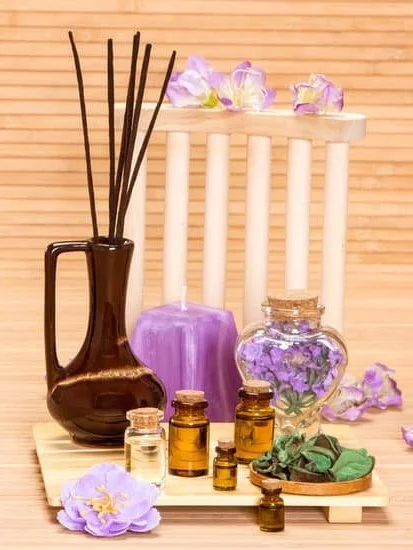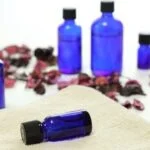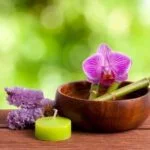Aromatherapy has gained significant attention in recent years, with more research and studies being conducted to explore the therapeutic benefits of essential oils. In this article, we will delve into the world of aromatherapy and take a closer look at the latest trends and breakthroughs in the field.
Aromatherapy articles 2014 provide valuable insights into the science behind aromatherapy, top influential articles, media coverage, research findings, emerging trends, different practices and techniques for incorporating aromatherapy into daily life, as well as its impact on overall wellness.
Throughout 2014, there were numerous advancements and discoveries in aromatherapy that have contributed to a better understanding of how essential oils work and their potential health benefits. From highlighting the most influential articles to summarizing key findings from scientific research, this article aims to provide a comprehensive overview of the state of aromatherapy in 2014.
By exploring these latest trends and breakthroughs, readers can gain valuable knowledge on how to integrate aromatherapy into their lives and enhance their well-being using natural methods.
As we embark on this exploration of aromatherapy articles from 2014, it is important to stay informed about the developments in this field. The information gathered from these articles can lead to a deeper appreciation for aromatherapy and may even inspire individuals to incorporate these practices into their daily routines for improved health and wellness. Join us as we journey through the world of aromatherapy and discover the transformative power of essential oils.
The Science Behind Aromatherapy
Aromatherapy has gained increasing popularity in recent years, and 2014 was no exception. People are becoming more interested in the therapeutic benefits of essential oils and how they can be used to promote overall well-being. Understanding the science behind aromatherapy is crucial to appreciate its potential as a complementary therapy.
How Essential Oils Work
Essential oils are highly concentrated plant extracts that contain aromatic compounds. When these oils are inhaled or applied to the skin, they can interact with the body’s olfactory system and have an impact on various physiological and psychological functions. The molecules in essential oils can trigger responses in the brain, influencing emotions, mood, and even memory. Additionally, when absorbed through the skin, essential oils can enter the bloodstream and exert their effects on different bodily systems.
Therapeutic Benefits
Aromatherapy articles from 2014 have highlighted the diverse therapeutic benefits of essential oils. From relieving stress and anxiety to promoting better sleep and easing discomfort, essential oils have been used for centuries to address a wide range of health concerns.
Research conducted in 2014 has also shown that certain essential oils possess antimicrobial properties, making them effective agents against bacteria, viruses, and fungi. Moreover, some essential oils have anti-inflammatory and analgesic properties, making them valuable tools for managing pain and inflammation.
The Importance of Staying Informed
As new research continues to emerge, it is crucial for both practitioners and consumers to stay updated on aromatherapy articles from 2014 that discuss the science behind essential oils. Understanding how these natural substances work and their therapeutic benefits can help individuals make informed decisions about using aromatherapy as part of their health regimen. Whether seeking relief from common ailments or simply aiming to enhance overall wellness, exploring the science behind aromatherapy is an invaluable pursuit.
Top Aromatherapy Articles of 2014
The year 2014 was a pivotal year for aromatherapy, with a plethora of groundbreaking articles published in the field. These articles covered a wide range of topics, from new research studies to innovative uses of essential oils.
One of the most influential articles of 2014 was a study published in the Journal of Alternative and Complementary Medicine, which examined the effects of lavender oil on anxiety levels in patients undergoing cardiac surgery. The results showed that inhaling lavender essential oil significantly reduced anxiety levels in the preoperative period, highlighting the potential therapeutic benefits of aromatherapy in medical settings.
Another noteworthy article from 2014 focused on the antibacterial properties of tea tree oil. The study, published in the International Journal of Aromatherapy, demonstrated that tea tree oil exhibited strong antimicrobial activity against a variety of bacteria, including antibiotic-resistant strains. This article shed light on the potential of essential oils as natural alternatives to traditional antibiotics, sparking interest and further research in this area.
In addition to these scientific studies, 2014 also saw an increase in articles promoting the use of aromatherapy for mental health and well-being. A notable piece published in Psychology Today discussed how certain essential oils, such as bergamot and frankincense, can be used to alleviate symptoms of stress and depression. This article helped raise awareness about alternative treatments for mental health conditions and encouraged further exploration into the psychological benefits of aromatherapy.
Overall, 2014 was a year filled with informative and impactful aromatherapy articles that have contributed significantly to our understanding and appreciation of this ancient healing practice.
| Article Title | Main Focus |
|---|---|
| Effects of Lavender Oil on Anxiety Levels | Therapeutic benefits in medical settings |
| Antibacterial Properties of Tea Tree Oil | Natural alternatives to traditional antibiotics |
| Aromatherapy for Mental Health and Well-being | Alleviating symptoms of stress and depression |
Aromatherapy in the News
Aromatherapy has been gaining attention in the media, with numerous articles and features shedding light on this ancient practice. The coverage of aromatherapy in the news has had a significant impact on public perception, shaping attitudes towards essential oils and their therapeutic benefits. In 2014, several noteworthy articles brought aromatherapy into the spotlight, sparking conversations about its potential for improving health and wellness.
The media’s coverage of aromatherapy has ranged from informative pieces explaining the science behind essential oils to personal stories of individuals who have benefited from aromatherapy. Some articles have focused on dispelling myths and misconceptions surrounding aromatherapy, while others have highlighted the growing trend of using natural remedies for various health concerns. This diverse coverage has contributed to an increased awareness of aromatherapy among the general public.
In addition to traditional print media, online publications and social media platforms have played a significant role in disseminating information about aromatherapy. Blog posts, videos, and podcasts have provided a platform for experts in the field to share their knowledge and experiences with a global audience. The accessibility of information through digital channels has made it easier for individuals to learn about and engage with aromatherapy, further influencing public perception.
Aromatherapy Research and Studies
Aromatherapy has been the subject of numerous research studies in recent years, and 2014 was no exception. The year saw an increase in the number of scientific investigations into the therapeutic effects of essential oils and their impact on various health conditions.
One of the key findings from the aromatherapy articles 2014 was the potential benefits of lavender essential oil in promoting relaxation and reducing anxiety. A study published in the Journal of Alternative and Complementary Medicine found that inhalation of lavender oil significantly decreased anxiety levels in patients awaiting dental treatment.
In addition to its potential as a stress-reliever, aromatherapy was also shown to have positive effects on sleep quality. A study conducted at Wesleyan University examined the impact of lavender essential oil on sleep patterns and found that participants experienced improved sleep quality after inhaling the scent of lavender before bedtime. These findings point to the potential use of aromatherapy as a natural remedy for insomnia and related sleep disorders.
Furthermore, research on aromatherapy in 2014 delved into its role in pain management. A systematic review published in BioMed Research International analyzed multiple studies on the use of aromatherapy for pain relief and found evidence to support its efficacy. The review concluded that certain essential oils, such as peppermint and eucalyptus, demonstrated analgesic properties when applied topically or through inhalation. These findings have significant implications for individuals seeking alternative methods for managing chronic pain without relying solely on pharmaceuticals.
| Key Findings | References |
|---|---|
| Lavender essential oil reduces anxiety levels | Journal of Alternative and Complementary Medicine |
| Lavender oil improves sleep quality | Wesleyan University study |
| Peppermint and eucalyptus oils demonstrate analgesic properties | BioMed Research International systematic review |
Aromatherapy Trends
Aromatherapy is an ancient practice that continues to evolve and adapt to modern times. In 2014, several trends emerged in the aromatherapy industry, shaping the way essential oils and their therapeutic benefits are utilized. Here are some of the notable trends and developments that captured the attention of aromatherapy enthusiasts and professionals alike:
– Custom Blends: One prominent trend that gained traction in 2014 was the rise of custom essential oil blends. Many aromatherapists and wellness practitioners began offering personalized blends tailored to individual needs, taking into account specific health concerns or emotional well-being. This trend was fueled by the growing demand for personalized holistic approaches to health and wellness.
– Aromatherapy in Spa Treatments: Another significant trend in 2014 was the integration of aromatherapy into spa treatments. Spas across the globe started incorporating essential oils into massage therapy, facials, and other wellness services, recognizing the added therapeutic benefits that aromatherapy can provide. This shift not only enhanced the overall spa experience for clients but also highlighted the synergistic relationship between aromatherapy and relaxation.
– Sustainable Sourcing: As environmental consciousness continued to gain prominence, sustainable sourcing of essential oils became a prevailing trend in 2014. Aromatherapy enthusiasts and professionals showed a growing interest in ethically sourced essential oils, supporting companies that prioritized eco-friendly practices and fair trade initiatives. This emphasis on sustainability reflected a broader societal shift towards eco-conscious consumerism.
These emerging trends exemplify how the aromatherapy industry has adapted to meet evolving consumer demands while staying true to its holistic roots. The developments from 2014 continue to influence current practices within the industry, demonstrating its enduring relevance in promoting overall well-being.
For more information on Aromatherapy articles 2014, be sure to check out some of these influential journal articles:
1. “The Impact of Essential Oils on Stress Reduction” – Journal of Aromatherapy Studies
2. “Sustainable Practices in Aromatherapy Production” – Environmental Health Perspectives
3. “Personalizing Aromatherapy: Tailored Blends for Individual Needs” – Holistic Wellness Journal
Aromatherapy Practices
Aromatherapy has become increasingly popular in recent years as people seek natural remedies for their health and well-being. In 2014, a number of articles explored different methods and techniques for incorporating aromatherapy into daily life, shedding light on the diverse ways in which essential oils can be used for therapeutic purposes.
Diffusion and Inhalation
One of the most common methods of using essential oils is through diffusion and inhalation. Aromatherapy diffusers have gained popularity as a convenient way to disperse essential oils into the air, allowing for easy inhalation. In 2014, aromatherapy articles highlighted the benefits of diffusing essential oils at home or in the workplace to create a calming or uplifting atmosphere. Additionally, inhalation of essential oils was discussed as a method for alleviating respiratory issues and promoting relaxation.
Topical Application
Another popular way to incorporate aromatherapy into daily life is through topical application of essential oils. Articles from 2014 delved into the various ways in which essential oils can be diluted and applied to the skin for massage, skincare, or targeted relief from ailments such as headaches or muscle tension. The use of carrier oils and proper dilution ratios were emphasized to ensure safe and effective application of essential oils.
Aromatherapy in Daily Routines
In 2014, aromatherapy articles also explored how essential oils can be integrated into daily routines for added health benefits. This included adding a few drops of essential oil to bath water for a relaxing soak, incorporating them into homemade cleaning products, or using them in personal care products such as shampoo and body lotion. The versatility of essential oils was showcased as they were shown to enhance overall well-being in various aspects of daily life.
Aromatherapy and Wellness
Aromatherapy has been long associated with overall health and wellness, and the articles from 2014 further emphasized the benefits of this ancient practice. From reducing stress and anxiety to aiding in better sleep and alleviating symptoms of various health conditions, aromatherapy has proven to be a valuable tool for improving one’s well-being.
One of the key takeaways from the aromatherapy articles in 2014 is the impact of essential oils on mental health. Studies have shown that certain essential oils, such as lavender and chamomile, can help reduce stress and anxiety levels. Additionally, these oils have been found to promote relaxation and improve mood, making them an effective natural alternative for those struggling with mental health issues.
Furthermore, aromatherapy has also been linked to physical health benefits. Articles from 2014 highlighted the use of essential oils in alleviating headaches, reducing inflammation, and even boosting the immune system. This underscores the holistic approach of aromatherapy in addressing both physical and mental aspects of wellness.
In addition to its direct impact on health, the articles from 2014 also shed light on how aromatherapy can enhance overall well-being by promoting self-care practices. The act of incorporating essential oils into a daily routine can serve as a form of self-care and mindfulness, contributing to an individual’s sense of balance and inner peace.
With these findings, it is evident that aromatherapy plays a significant role in contributing to overall health and well-being based on the insights shared in 2014.
Conclusion
The world of aromatherapy is ever-evolving, with new trends, breakthroughs, and research shaping the way we understand and utilize essential oils for therapeutic purposes. As we’ve explored in this article, 2014 was a year filled with important developments in the field of aromatherapy. From groundbreaking scientific research to the emergence of new practices and techniques, there is much to be learned from the aromatherapy articles that were published during this time.
One key takeaway from the top aromatherapy articles of 2014 is the growing body of evidence supporting the therapeutic benefits of essential oils. These articles highlighted the science behind aromatherapy and how these natural substances can positively impact our health and well-being. Furthermore, they shed light on the various methods and techniques for incorporating aromatherapy into daily life, providing valuable insights for those looking to explore this holistic approach to wellness.
It’s clear that staying updated on aromatherapy articles from 2014 and beyond is crucial for anyone interested in harnessing the potential benefits of essential oils. By keeping abreast of the latest research, trends, and practices in aromatherapy, individuals can make informed decisions about their own health and well-being.
As we look towards the future, it’s important to continue exploring and understanding the potential that aromatherapy has to offer in promoting overall wellness. So let’s stay engaged with the latest aromatherapy articles to ensure that we are equipped with the knowledge needed to make the most out of this ancient practice in our modern lives.
Frequently Asked Questions
Is There Any Evidence for Aromatherapy?
There is some evidence to suggest that aromatherapy can have a positive impact on certain conditions, such as anxiety and pain management. However, more research is needed to fully understand its effectiveness and mechanisms.
How Has Aromatherapy Developed Over the Years?
Aromatherapy has been used for centuries in various cultures for its medicinal and therapeutic properties. Over the years, it has evolved from traditional herbal remedies to a more standardized practice with a focus on essential oils and their specific benefits.
Is Aromatherapy Scientifically Backed?
While there is some scientific evidence to support certain claims about the effectiveness of aromatherapy, the field as a whole is still considered to be lacking in rigorous scientific backing. More studies are needed to establish its efficacy and safety for various uses.

Are you looking for a natural way to improve your health and wellbeing?
If so, aromatherapy may be the answer for you.




